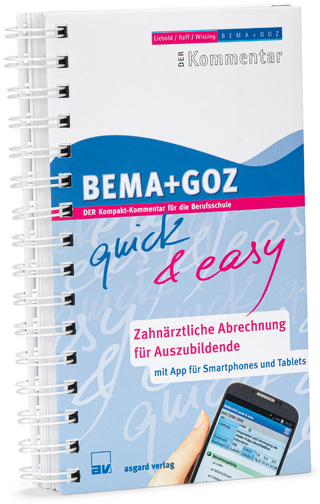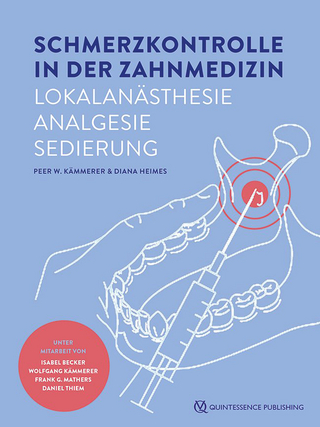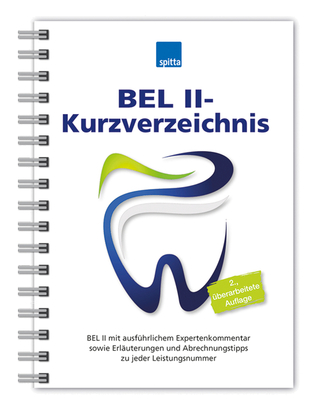
Photographical Analysis of Macro- and Micro-aesthetic Appearance. A Cross-Sectional Study of Iraqi Adults with Class I Normal Occlusion
Anchor Academic Publishing (Verlag)
978-3-96067-202-9 (ISBN)
This book represents a master thesis in orthodontics from the College of Dentistry-University of Baghdad/Iraq. The uniqueness of this work comes from that it is the first one that analyses the micro-aesthetic appearance to establish normative values for the Iraqi population and find out whether there is a correlation between apparent mesiodistal measurements of maxillary anterior teeth and facial measurements by an indirect method of measurement, using photographs in a sample of Iraqi population.
Dana R. Mohammed is an orthodontist and assistant lecturer at College of Dentistry-University of Basrah/Iraq. She completed her B.D.S. study at University of Basrah-Iraq in 2010, and her M.Sc. degree in orthodontics at University of Baghdad-Iraq in 2016. The author is a member of the Iraqi Dental Association and the Iraqi Orthodontic Society.
Text Sample:
Chapter 2.2. Methods
2.2.1. Ethical Consideration
Participants should be informed about the purpose of this study and that their photographs will be used for this research and may be used for future further investigations, any questions from the participants regarding the study were answered appropriately before enrolling in this study.
2.2.2. Clinical Examination
2.2.2.1. History
Each participant was seated on the dental chair and information about his/her name, age, medical and dental history was obtained from him/her, then each participant was examined clinically (extraoral and intraoral) to ensure his/her inclusion in the study according to criteria of sample selection. After that, a written consent form was obtained from the participants to assure their voluntary participation in the study. The case sheet for the clinical examination and the consent form were used in this study as shown in the appendix I, II.
2.2.2.2. Skeletal Examination
a. Anteroposterior Relation: each participant was postured in an upright position in dental chair with Frankfort plane parallel to the floor, and asked him/her to occlude gently on posterior teeth and gaze at a distant point (Roberts-Harry and Sandy, 2003).
As shown in (Fig 2.7), by using the index finger of the right hand to palpate the soft tissue point A (deepest point in the upper lip at midline) and the middle finger to palpate the soft tissue point B (deepest point in the lower lip at midline), the skeletal pattern was assessed (Foster, 1985).
[...]
b. Vertical Relation: The vertical relation was measured in terms of facial height, the upper anterior facial height was represented by the distance from the point between the eyebrows "glabella" to the base of the nose "subnasale", the lower anterior facial height was the distance from the soft tissue menton (base of the chin) to the base of the nose, after marking the points of glabella (Gl), subnasale (Sn), menton (Me) with a marker, the facial heights were measured with a vernier (Roberts-Harry and Sandy, 2003), [...].
c. Horizontal Relation: This dimension was assessed by looking at the participant head-on and assess whether there was asymmetry in the facial midline (Roberts-Harry and Sandy, 2003).
2.2.2.3. Dental Examination
Each participant was examined intraorally to ensure that all permanent teeth were present according to the previously mentioned criteria. Then the relation between the maxillary and mandibular teeth were examined:
a. Classification of Occlusion
-Molar Classification: In Class I normal occlusion, the tip of the mesio-buccal cusp of the maxillary first permanent molar should occlude with the mesio-buccal groove of the mandibular first permanent molar (Angle, 1899, Foster, 1985; Sandeep and Sonia, 2012).
-Canine Classification: The tip of maxillary permanent canine in Class I relation should occlude into the embrasure between the mandibular canine and mandibular first premolar (Angle, 1899; Jones and Oliver, 2000).
-Incisor classification: According to British Standard Institution (BS4492, 1983), in Class I relation, the incisal edges of mandibular permanent incisors should occlude on or directly beneath the cingulum plateau of the maxillary permanent incisors.
b. Measurement of the Overjet and the Overbite
While the participant was in centric occlusion with his/ her occlusal plane horizontal, the overjet was measured with the use of dental vernier by placing the tip of vernier on the labial aspect of the mandibular central incisor, holding it against the incisal edge of the maxillary central incisor horizontally. The overjet was measured to the nearest millimeters (Draker, 1960).
Measurement of the overbite was made with the aid of a dental vernier, the amount of overlap of the maxillary incisors on the mandibular incisors was marked with the pencil on the labial aspect of the mandibular incisors, using the incisal edge of the maxillary incisor to guide the pencil, the upper con
| Erscheinungsdatum | 04.03.2022 |
|---|---|
| Sprache | englisch |
| Maße | 155 x 220 mm |
| Gewicht | 238 g |
| Themenwelt | Medizin / Pharmazie ► Zahnmedizin |
| Schlagworte | Dental Aesthetics • Dental-Facial aesthetics • Divine proportion • Facial Aesthetics • facial attractiveness • Facial Beauty • Facial Measurements • Facial proportion • Golden proportion • Macro-aesthetic Appearance • Orthodontics • Orthodontic Treatment |
| ISBN-10 | 3-96067-202-0 / 3960672020 |
| ISBN-13 | 978-3-96067-202-9 / 9783960672029 |
| Zustand | Neuware |
| Haben Sie eine Frage zum Produkt? |
aus dem Bereich


